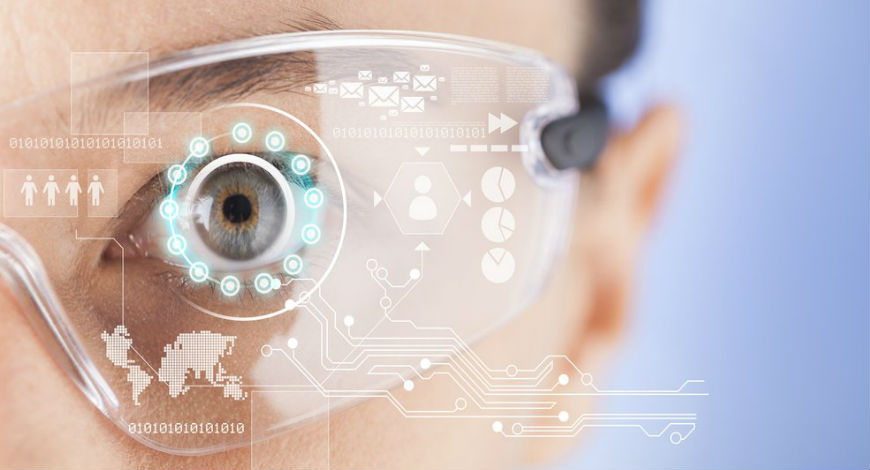Augmented and Virtual Reality make learning an immersive experience for students in higher education.
Technology has been a great boon in taking education out of the rut of chalk-talk and rote learning of yore. Students now have access to a vast amount of data and learning materials while teachers are increasingly playing the role of learning facilitators. Education has been customized according to students’ needs. Teachers are creating online lessons to address particular learning gaps and strengthen understanding for certain topics that need deeper learning intervention. To top it, Augmented and Virtual Reality technologies are being deployed for optimizing learning outcomes through the use of simulation, 3D imagery, and advanced audio-visual effects.
At the outset, it is important to distinguish between Augmented Reality and Virtual Reality for a better understanding of their implications on higher education. Augmented Reality embellishes the existing reality with the elements of imagery, sound effects, or text. Virtual Reality, on the other hand, creates a new, simulated environment that presents the given topic to students in an engaging, interactive and experiential manner. Both technologies are catching on fast in the education sector, and as per the estimates, the market for AR/VR in the education industry is expected to grow up to $6 billion by 2023.
Use of AR/VR in Higher Education
The real purpose of AR/VR in higher education is to promote student engagement and nurture better understanding. By making learning immersive and experiential through VR headsets, teachers can explain complex concepts to students in a controlled environment.
Some of the fields where AR/VR are being used are:
Sciences: Educational institutions are harnessing the visual and sensory power of VR to teach students subjects such as human and animal anatomy, molecular biology, chemistry and atomic physics. Astronaut and pilot training makes extensive use of the extended reality technology.
Humanities: Virtual tours to historical monuments and archaeological sites in far off places are enriching the learning experience of history, archaeology and political science students. Furthermore, students of arts get first-hand experiences of the world’s top museums and the artworks housed therein through VR.
Business Studies: Different business and economic models can be better explained to students through the use of AR/VR. In business education, the real buying-selling, the in-store experiences, production line, supply chain etc. could be made visibly understandable and experiential with the use of AR/VR. The technology comes in very handy in making students corporate-ready.
Architecture & Engineering: The most widespread use of AR/VR is witnessed in the fields of architecture and engineering. Using VR technology, the designers are able to not just better implement their vision by creating to-scale 3-D models, they are pushing the boundaries of physics and mechanics by creating the most imaginative and innovative designs.
Communication Skills: Across the disciplines, VR tech is being used by students to enhance their communication skills, particularly public speaking abilities. There are VR e-learning virtual speech courses that allow students to choose the size of the crowd being addressed and then practise public speaking and presentation skills.
Advantages of AR/VR in Higher Education
The biggest benefit of AR/VR in higher education is the learning outcome of students.
- AR/VR makes learning immersive and experiential
- It leads to enhanced memory retention among students
- It is particularly of great aid to students with learning difficulties
- It dissects and simplifies complex topics and concepts for better understanding
- It promotes self-learning and self-sufficiency among students
- It is a great training tool and instils confidence in learners
- It makes remote learning engaging and interesting
The Future of AR/VR in Higher Education
Across the institutions of higher education, there has been an uptick in the deployment of AR/VR for enhanced learning. Schools and colleges are creating infrastructure and committing resources to integrate their curricula with these technologies. AR/VR technology is not inexpensive and requires special alignment between the tech and the curricula to deliver desired learning results. This may deter some institutions to incorporate AR/VR in their education delivery systems.
Greater awareness needs to be created through workshops and tutorials to convince the educators that the benefits of AR/VR far outweigh the costs. The technology can be showcased to the community on campus through special events involving AR/VR. Moreover, with time, as the economies of scale come into play, the cost of AR/VR will get streamlined and new technologies will further increase the lure of making learning a real-life experience for students. Given these advancements in ed-tech, the future of higher education looks bright.
Disclaimer: The views expressed in the article above are those of the authors’ and do not necessarily represent or reflect the views of this publishing house
Source: AR And VR The Next Big Thing In Education – BW Education













